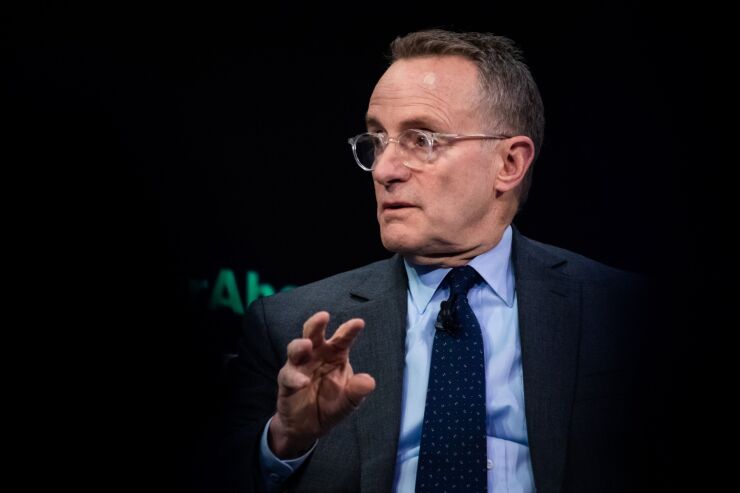For investment firms that profit by buying the debt of troubled companies, it looked like the opportunity of a lifetime: a $1 trillion pile of distressed bonds and loans in the Americas alone as the pandemic sent markets into meltdown last March.
But after a massive federal bailout and rock-bottom interest rates kept even some of the shakiest companies afloat, those juicy targets have shriveled to less than $100 billion. That’s left distressed-debt specialists -- who at one point last year had $131 billion to spend -- rummaging for increasingly elusive bargains. Even the real estate sector, which was hammered after the pandemic shuttered offices, hotels and stores, has managed for now to avoid an epic wipeout.
So, how are distressed-debt investors - often among of the savviest in the markets - deploying all that cash? A few, like Caspian Capital, decided to return some money to investors because the rewards wouldn’t justify the high risks anymore.
Others are looking farther afield. Olympus Peak Asset Management is dipping into things like unpaid vendor claims in firms that are already bankrupt. Arena Investors is picking through convertible bonds and real estate loans cast off by banks. And giants of the business like Oaktree Capital Management are rustling around in
“People aren’t investing, they’re just chasing,” said Adam Cohen, Caspian’s managing partner. And this comes with an extra helping of risk, according to Oaktree co-founder Howard Marks, the dean of distressed investing. “To get to higher returns these days, you have to be willing to extend credit to somebody who is not clearly coming back,” Marks said in a Bloomberg TV interview.
The money nevertheless continues to roll in, and managers have made some progress at finding new places to put it. About 40 funds - from Oaktree to Angelo Gordon & Co. - collected about $35 billion between this year and last, according to consultants at Preqin.
For Arena Investors, a $2.2 billion investment firm, going smaller and nimble has had its advantages, said Chief Executive Officer Dan Zwirn. That’s because 80% of distressed companies in early April had less than $1 billion of debt outstanding, and about 60% of the companies that filed for Chapter 11 bankruptcy last year owed less than $500 million. That’s left too many larger firms chasing the few big situations that are left.

“When you’re writing checks above $100 million, the level of competition is excessive,” Zwirn said.
Arena deployed almost all of the $519 million it raised for a special opportunities strategy last year, targeting industries dislocated by the pandemic. Among the things they’ve been active in: real estate loans, special-situation lending in energy and aviation and litigation finance.
Tighter lending
Fund managers like Olympus Peak are also looking at companies that are too small to tap into the seemingly limitless bond and equity markets, which were supercharged last year by the unprecedented wave of federal stimulus.
Large public-market borrowers have been mostly picked over by now. Smaller companies, on the other hand, have relied more on banks for liquidity. And the percentage of banks making it tougher to get a loan is still high at 11.4%, according to the Federal Reserve, well above the 1.9% average since the great financial crisis.
“If you can only do public-market distress, you just have to hold your position, because if you sell it, there’s nothing else to buy,” said Jason Dillow, chief executive officer at the $8.4 billion Bardin Hill Investment Partners.





